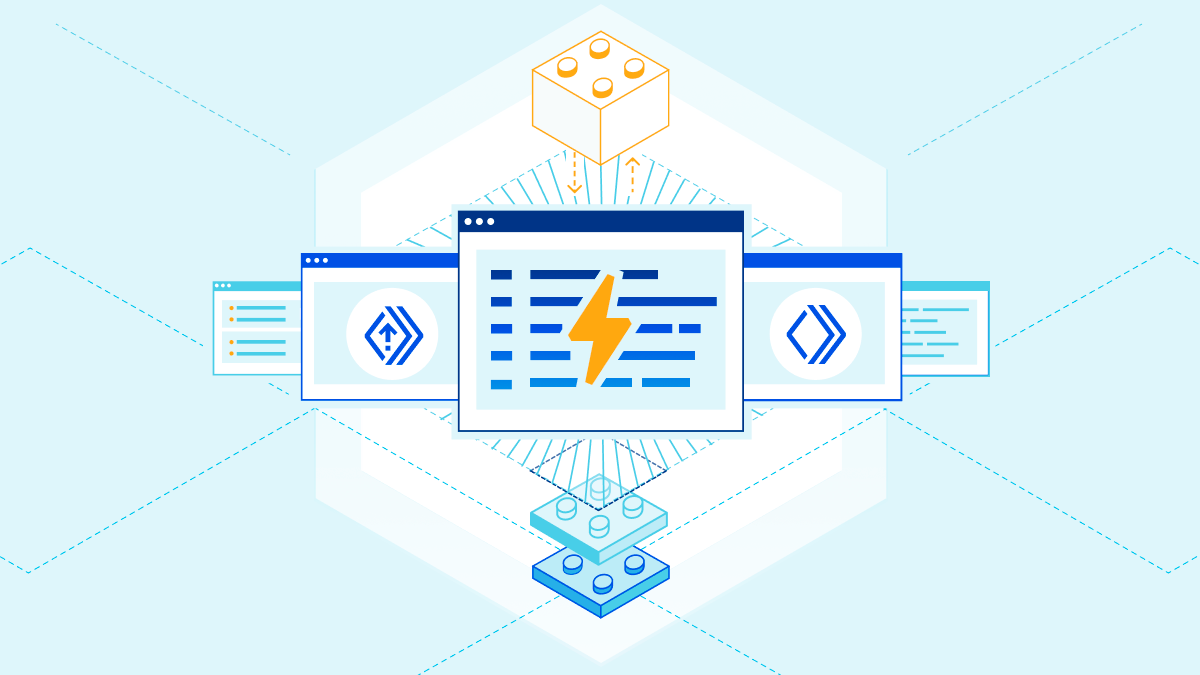Deploy Ceph on K8s Worker Nodes Using ROOK
please visit following Git wiki
https://github.com/kashif-nawaz/Deploy-Ceph-on-K8s-Worker-Node-Using-ROOK
please visit following Git wiki
https://github.com/kashif-nawaz/Deploy-Ceph-on-K8s-Worker-Node-Using-ROOK


You can now deploy Next.js applications which opt in to the Edge Runtime on Cloudflare Pages. Next.js is the fourth full-stack web framework that the Pages platform officially supports, and it is one of the most popular in the 'Jamstack-y' space.
Cloudflare Pages started its journey as a platform for static websites, but with last year's addition of Pages Functions powered by Cloudflare Workers, the platform has progressed to support an even more diverse range of use cases. Pages Functions allows developers to sprinkle in small pieces of server-side code with its simple file-based routing, or, as we've seen with the adoption from other frameworks (namely SvelteKit, Remix and Qwik), Pages Functions can be used to power your entire full-stack app. The folks behind Remix previously talked about the advantages of adopting open standards, and we've seen this again with Next.js' Edge Runtime.
Next.js' Edge Runtime is an experimental mode that developers can opt into which results in a different type of application being built. Previously, Next.js applications which relied on server-side rendering (SSR) functionality had to be deployed on a Node.js server. Running a Node.js Continue reading
Sponsored Post: Analyst firm Gartner believes AI will remain one of the top workloads driving infrastructure decisions through to 2023 as more organizations push pilot projects into the production stage. …
How Do You Meet The Bandwidth Demands Of HPC And AI System Architectures? was written by Timothy Prickett Morgan at The Next Platform.

There's a move to regulate cloud providers by vertically separating the services they offer.
Like railroads of yore, who were not allowed to provide freight services on top of their base services, cloud providers would not be allowed to provide services on top of their base platform services.
Vertical separation would be new to the cloud industry. Is it a good idea? Would it actually solve any problems? My answers are no and no, but probably not for the reasons you think. Let's dive in.
Here are a few useful resources for exploring this argument:
Now Cory is about 100x times smarter than I am, but this analogy is wrong:
That's why the trustbusters were so big on "structural separation": the principle that a business can own a platform or use the platform, but not both.
So this remedy is also wrong:
Rather than trying to construct rules that kept the referee honest even when they played on one of the teams, they Continue reading
I started one of my VXLAN tests with a simple setup – two switches connecting two hosts over a VXLAN-enabled (gray tunnel) red VLAN. The switches are connected with a single blue link.

Test lab
I configured VLANs and VXLANs, and started OSPF on S1 and S2 to get connectivity between their loopback interfaces. Here’s the configuration of one of the Arista cEOS switches:
I started one of my VXLAN tests with a simple setup – two switches connecting two hosts over a VXLAN-enabled (gray tunnel) red VLAN. The switches are connected with a single blue link.

Test lab
I configured VLANs and VXLANs, and started OSPF on S1 and S2 to get connectivity between their loopback interfaces. Here’s the configuration of one of the Arista cEOS switches:
I should write up a larger technical document on this, but in the meanwhile is this short (-ish) blogpost. Everything you know about RISC is wrong. It's some weird nerd cult. Techies frequently mention RISC in conversation, with other techies nodding their head in agreement, but it's all wrong. Somehow everyone has been mind controlled to believe in wrong concepts.
An example is this recent blogpost which starts out saying that "RISC is a set of design principles". No, it wasn't. Let's start from this sort of viewpoint to discuss this odd cult.
Because of the march of Moore's Law, every year, more and more parts of a computer could be included onto a single chip. When chip densities reached the point where we could almost fit an entire computer on a chip, designers made tradeoffs, discarding unimportant stuff to make the fit happen. They made tradeoffs, deciding what needed to be included, what needed to change, and what needed to be discarded.
RISC is a set of creative tradeoffs, meaningful at the time (early 1980s), but which were meaningless by the late 1990s.
The interesting parts of CPU evolution are the three decades from 1964 with Continue reading
This month, LinkedIn researchers revealed in Science that the company spent five years quietly researching more than 20 million users. By tweaking the professional networking platform’s algorithm, researchers were trying to determine through A/B testing whether users end up Continue reading
On today’s Heavy Networking episode, I talk with Nick Carter about Flock Networks, his routing protocol stack startup, as well as Nick’s love of the Rust programming language. As a network engineer, maybe you don’t think you care about Rust. Nick’s here to explain why the discerning network engineer might prefer their routing daemons to have been written in Rust. We also talk about the pleasures and travails of startup life.
The post Heavy Networking 652: Why Networkers Should Want Routing Protocols Written In Rustlang appeared first on Packet Pushers.


Page Shield can now watch for malicious outbound connections made by third-party JavaScript code
Many websites use third party JavaScript libraries to cut development time by using pre-built features. Common examples include checkout services, analytics tools, or live chat integrations. Any one of these JavaScript libraries may be sending site visitors’ data to unknown locations.
If you manage a website, and you have ever wondered where end user data might be going and who has access to it, starting today, you can find out using Page Shield’s Connection Monitor.
Page Shield is our client side security solution that aims to detect malicious behavior and compromises that affect the browser environment directly, such as those that exploit vulnerabilities in third party JavaScript libraries.
Connection Monitor, available from today, is the latest addition to Page Shield and allows you to see outbound connections being made by your users’ browsers initiated by third party JavaScript added to your site. You can then review this information to ensure only appropriate third parties are receiving sensitive data.
Customers on our business and enterprise plans receive visibility in outbound connections provided by Connection Monitor. If you are using our Page Shield enterprise add-on, you also Continue reading
I promised you a blog post explaining the intricacies of implementing MLAG with EVPN, but (as is often the case) it’s taking longer than expected. In the meantime, enjoy the EVPN Multihoming Taxonomy and Overview video from Lukas Krattiger’s EVPN Multihoming versus MLAG presentation (part of EVPN Deep Dive webinar).
I promised you a blog post explaining the intricacies of implementing MLAG with EVPN, but (as is often the case) it’s taking longer than expected. In the meantime, enjoy the EVPN Multihoming Taxonomy and Overview video from Lukas Krattiger’s EVPN Multihoming versus MLAG presentation (part of EVPN Deep Dive webinar).